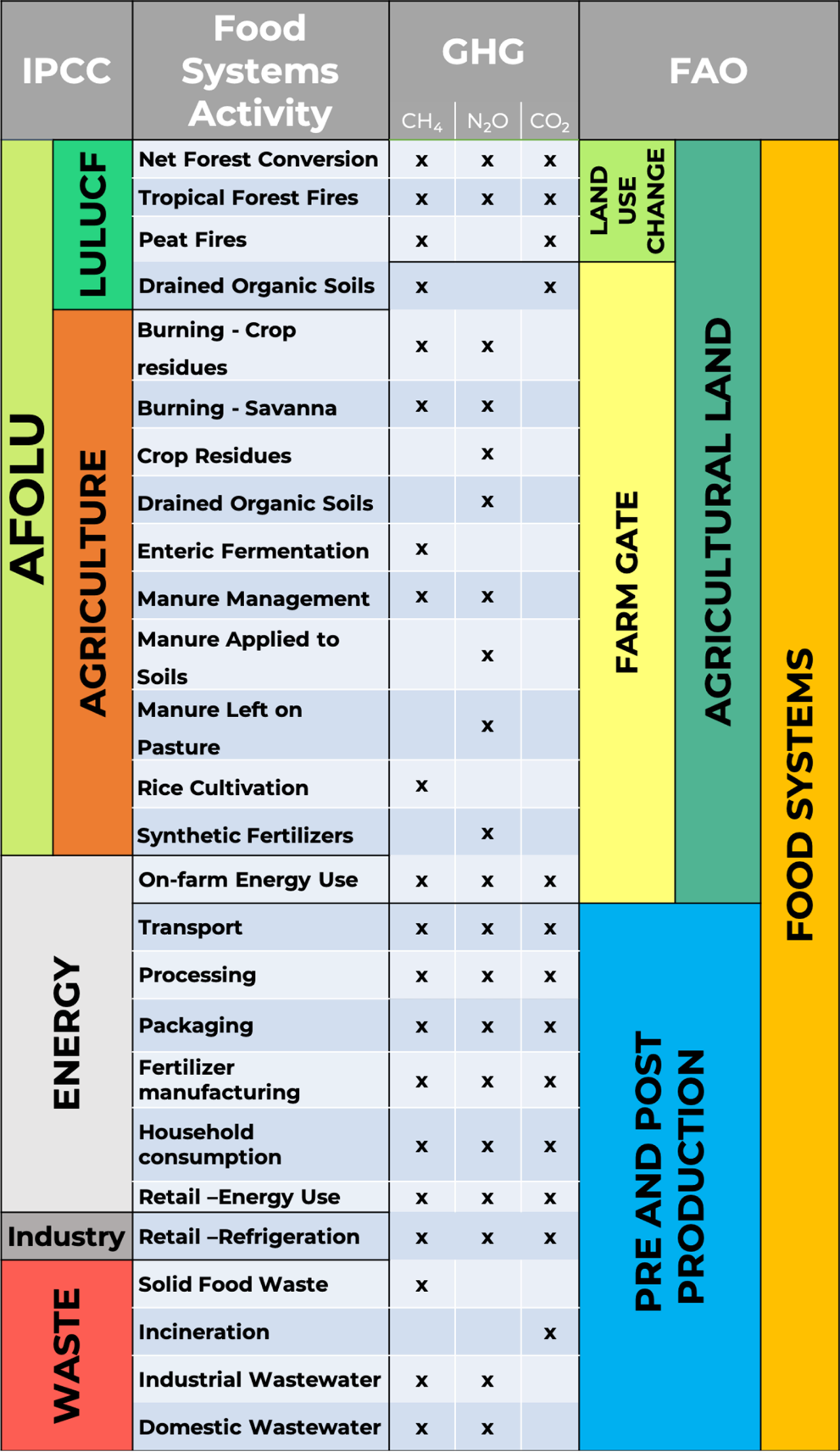April 14, 2022 | Earth System Science Data | Source |
Introduction: Traditional assessments have underestimated global GHG emissions from agrifood systems by focusing mainly on farm-level production and land-use change. An international research team led by the Food and Agriculture Organization (FAO), in collaboration with Columbia University (USA), the Potsdam Institute for Climate Impact Research (Germany), and the International Energy Agency (France), presents results from the FAOSTAT database covering emissions across 196 countries and 40 territories from 1990 to 2019 in both IPCC (Intergovernmental Panel on Climate Change) and FAO classifications. The study highlights emissions from pre- and post-production processes such as fertilizer manufacturing, food processing, transport, packaging, retail, consumption, and waste disposal.
Key findings: In 2019, agrifood systems accounted for 31% of total anthropogenic emissions (16.5 Gt COâ‚‚ eq.). Emissions from pre- and post-production activities reached 5.8 Gt COâ‚‚ eq., doubling since 1990 and surpassing farm-gate and land-use emissions in many regions, especially developed countries. Major contributors included household consumption, waste disposal, and retail. These processes were the largest source of COâ‚‚ (3.9 Gt), while farm-gate activities dominated methane (140 Mt CHâ‚„) and nitrous oxide (7.8 Mt Nâ‚‚O) emissions. Notably, fluorinated gases (F-gases)—primarily from refrigerants—rose from near zero in 1990 to over 25% of global emissions by 2019.
Pre- and post-production emissions are now the leading agrifood emission source in China (1.1 Gt COâ‚‚ eq.), the USA (0.7 Gt), and the EU-27 (0.6 Gt). In developing countries, these emissions more than doubled between 1990 and 2019, overtaking land-use change as the 2nd largest source—reflecting rising industrialization and urbanization. Regionally, household consumption was the main driver in Asia and Africa; food retail dominated in Europe, Oceania, North America, and Russia; food waste disposal was prominent in parts of Latin America and Southeast Asia; and on-farm energy use was significant in India.
Findings highlight the need for climate policies to go beyond farm and land-use sectors and address the entire food supply chain. Future research should prioritize improving emission factors and activity data, especially in overlooked regions, to support effective mitigation strategies.

Figure | Mapping of emissions across agri-food systems. Left: IPCC sectors and processes used in national GHG emissions inventories. Right: food and agriculture sectors and categories aligned to FAO's definitions.





